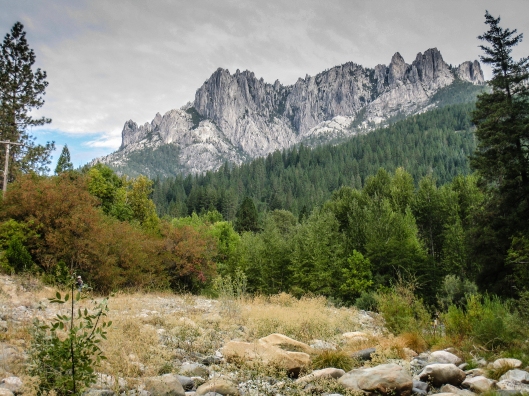Tags
With Kokufu opening just a bit more than an hour ago, at the time I’m writing this post, we can’t help but recall a suiseki we acquired last year at the Green Club – a Furuya stone.
Furuya stones (Furuya-ishi) are found in the mountains of the Wakayama prefecture of Japan. The stone is a hard black or black-gray limestone. They often depict mountain, waterfall or coastal rock stones. The Furuya stone is characterized by deep indentations (almost always vertical), with typically a smooth surface, often with thin white mineral veins running vertically down the face of the stone. Often the base has a white or gray-white band encircling the stone. The peaks of the stone are typically found pointing down in the ground. The soft stone between harder portions of the stone need to be removed using small chisels.
The gray-white band can not be seen as it has been cleverly hidden by the daiza. These are very expressive stones with a beautiful texture. They often remind me of Castle Crags near Dunsmuir, Ca.
One of the most spectacular Furuya stones we have seen belongs to David Sampson of England. This stone is featured prominently on his site – click here to view it – and we highly recommend David for items related to suiseki.
It doesn’t take long to see how beautifully expressive this stone is and how it captures the imagination. This stone is of such high quality it has been shown at the Nippon Suiseki Association show in Japan.
We have also noticed that these types of stones are almost always paired with a Chinese-style daiza. Can anyone tell us why? Perhaps they are more reminiscent of Chinese lingbi stones, but that is simply a guess on our part.
We highly recommend that you add a Furuya stone or two to your collection.





I had never made the connection on Chinese style daiza with Furuya but that is true. Hmmm. Several that I’ve seen I really liked the stone, but the daiza took away. Interesting.
I only know about these Japanese stones:
Their daiza stock is made so carefully through the fact they are never presented on suiban or doban trays, but always only in their daiza stocks. There are also some differences between Furuya stones and other suiseki in the yoseki care. Furuyas are purified by brushes, then by needles in details and then they are put behind the window on some sunny place inside the house. They are never exposed in the garden and they are never watered on the garden wooden benches. It is possible, that the water can damage their surfaces. And it can be the reason, they are never presented on suiban trays, where Japanese use to water stones on.
Tom,. Czech rep.